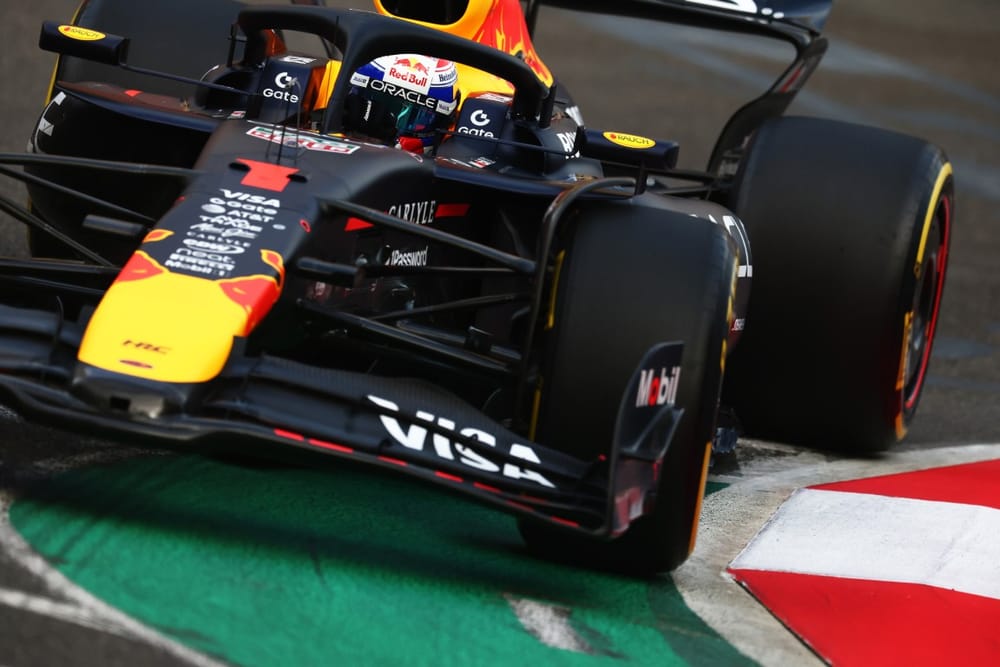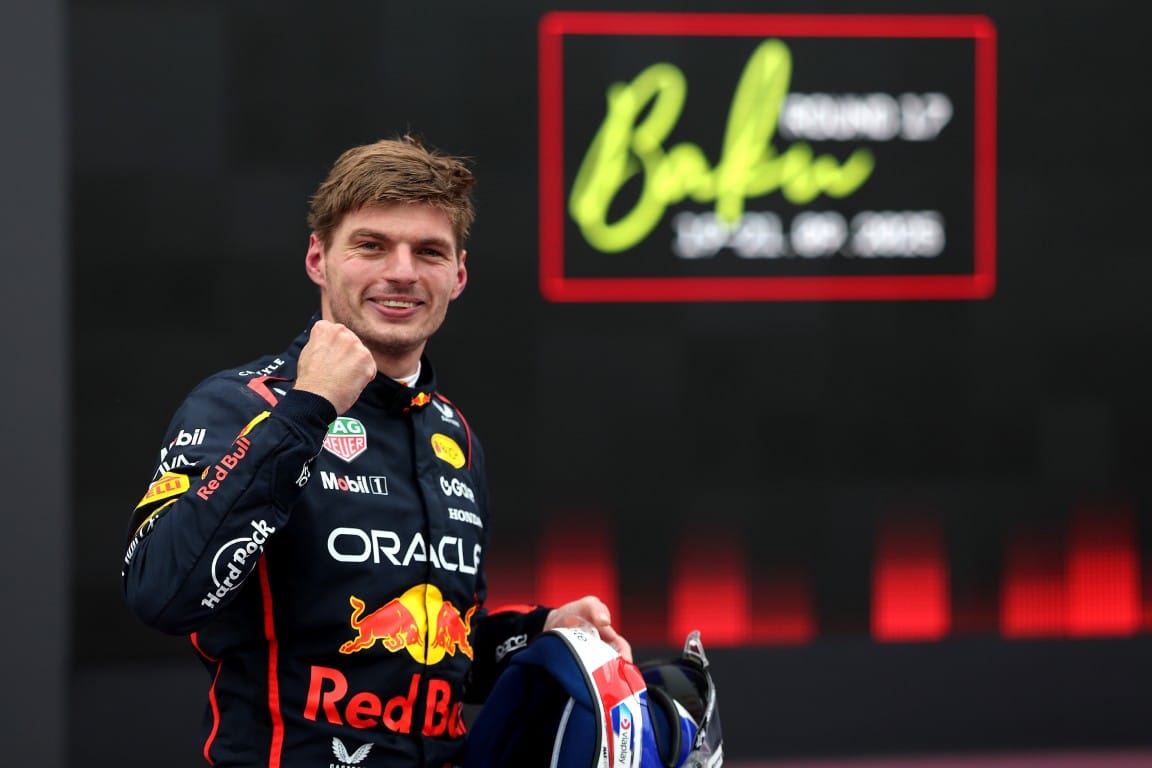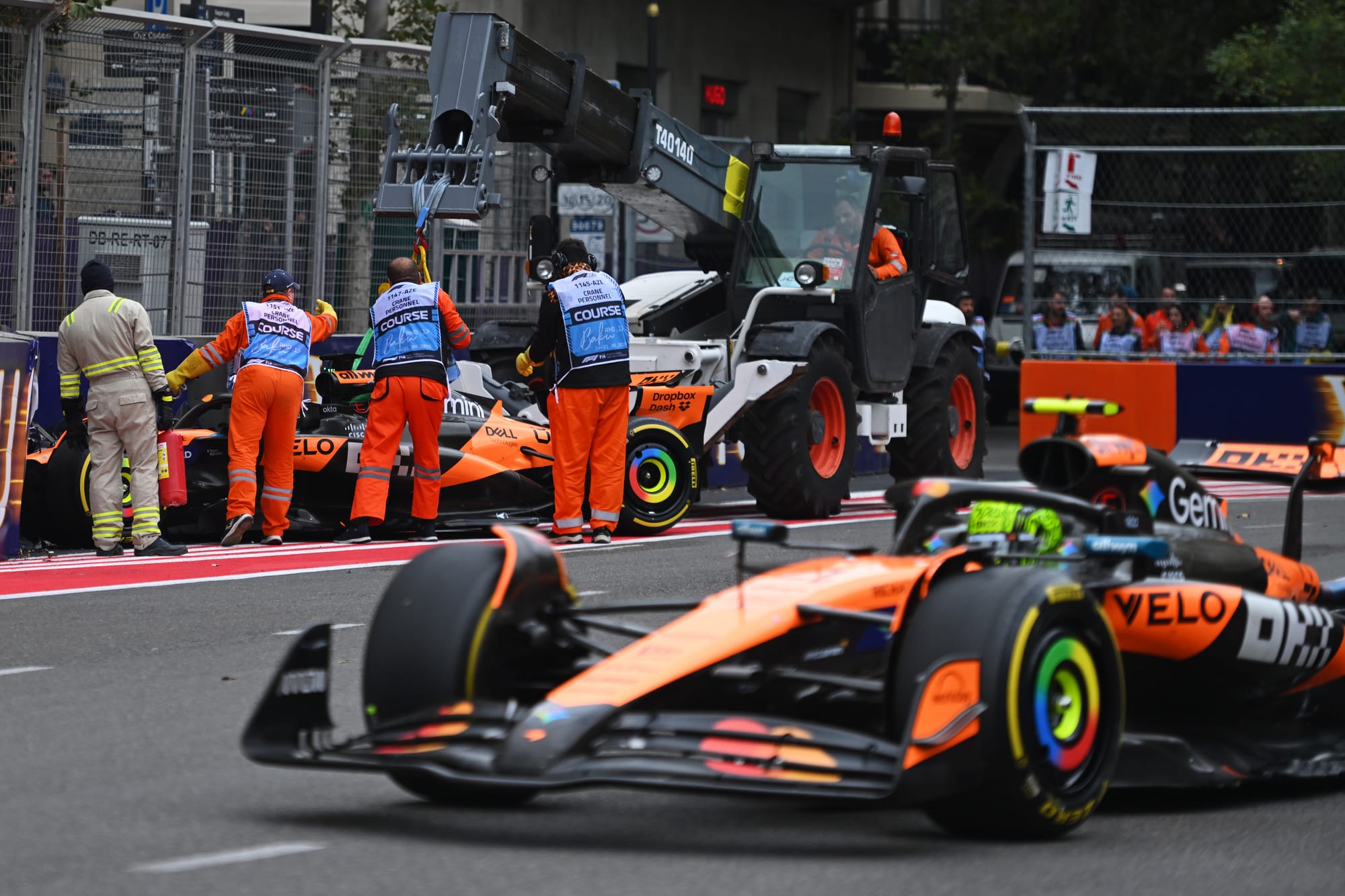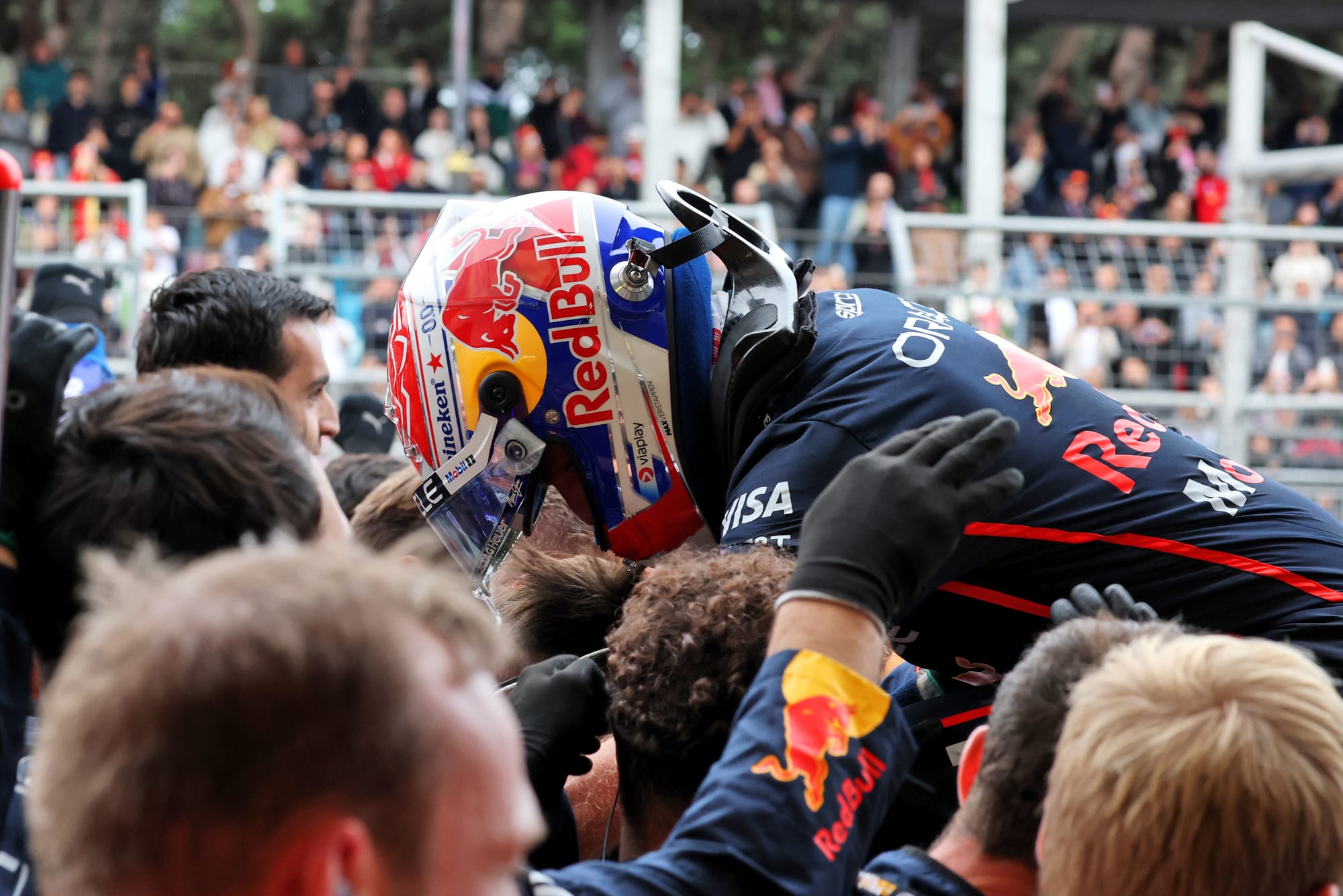Max Verstappen’s victory in Formula 1’s Azerbaijan Grand Prix has put a spark back in the title battle – with main rival McLaren convinced the Dutchman is a serious threat.
Its team boss Andrea Stella had voiced his concern about Verstappen’s potential on Saturday night in Baku, when the Red Bull driver was 94 points adrift of championship leader Oscar Piastri.
Those fears of a comeback have since ramped up thanks to Piastri’s disastrous opening lap that ended in the barriers, and another crushing win from Verstappen. A now 69-points deficit with eight races remaining means everything is possible.
However, while Red Bull and Verstappen certainly appear to have unlocked something extra from the RB21 in recent weeks, the team is not getting ahead of itself just yet.
It is much more cautious than McLaren about talk of a championship assault, and is very mindful that, while progress has been made with its car, equally there remain some unanswered questions about where it stacks up.
And this is why it needs three clear answers - which will be delivered from the next race in Singapore - about whether what we have seen over the past two grands prix is down to individual circumstances or it marks a sea-shift change in F1’s competitive order at the front.
Is the RB21 a low-downforce one-trick pony?
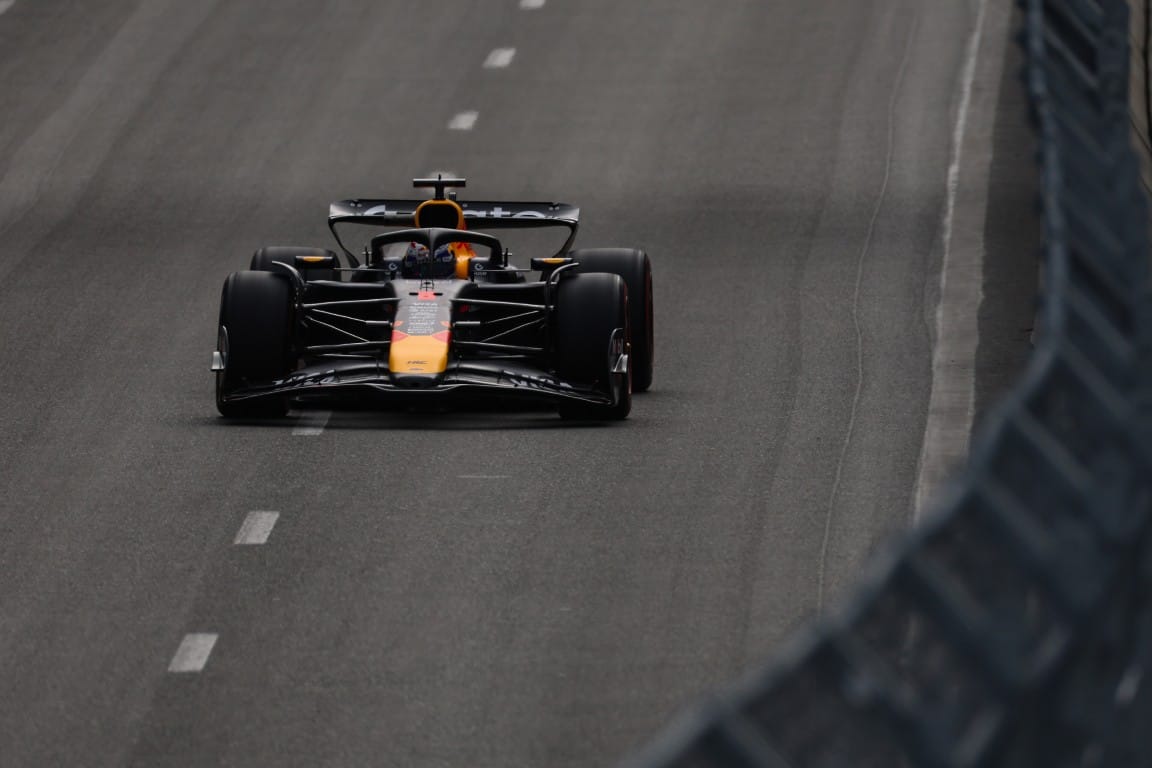
It has long been accepted that the Red Bull and McLaren have different strengths at difference downforce levels.
At medium-downforce tracks, and especially those with long corners, the McLaren has been in a class of its own. Just look at how strong it was in Hungary and the Netherlands, for example.
As Stella remarked about the MCL39: “It's a car that really wants to roll - like corner one in Zandvoort is a McLaren corner.”
Once the downforce comes off, however, the formbook changes and it is the Red Bull that has greater strengths.
Its aero efficiency is much greater. It is better in straightline performance, and it is a step ahead in straightline braking. Furthermore, if low-downforce tracks don’t have long corners where the McLaren excels - and Baku didn't - then Red Bull's advantage is even greater.
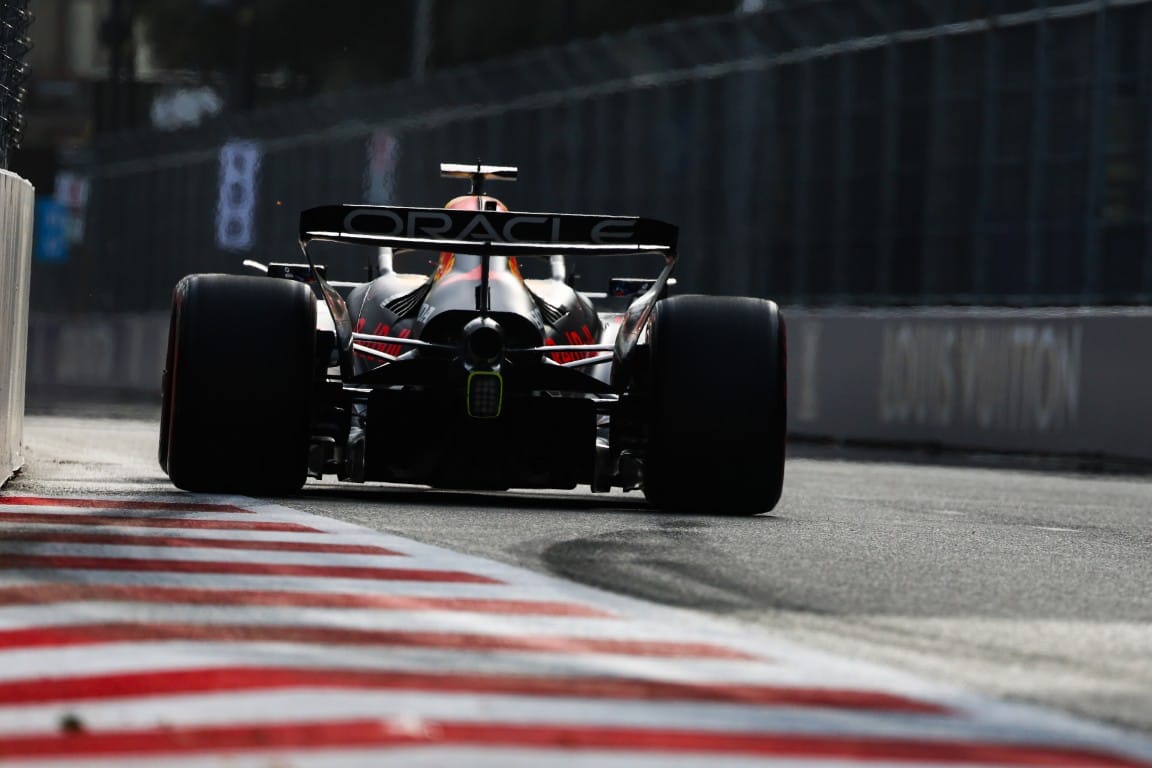
Stella said recently: “I think when we go at this level of downforce, then Red Bull possibly becomes overall the best car.”
This traits explain in basic terms why McLaren is not surprised that Red Bull has been better at places such as Monza and Baku than the Hungaroring and Zandvoort.
However, what has put McLaren on red alert about Red Bull since Monza is that there appears to have a shift in its performance characteristics since a new floor arrived.
Stella has talked about radio messages from Verstappen complaining about the car bottoming out – which suggests it is now running lower than ever, at ride heights where the juicy downforce is.
Furthermore, he says the performance profile of the car against McLaren has changed – with Monza highlighting some competitiveness from Red Bull in the medium-speed corners where it had previously been lacking.
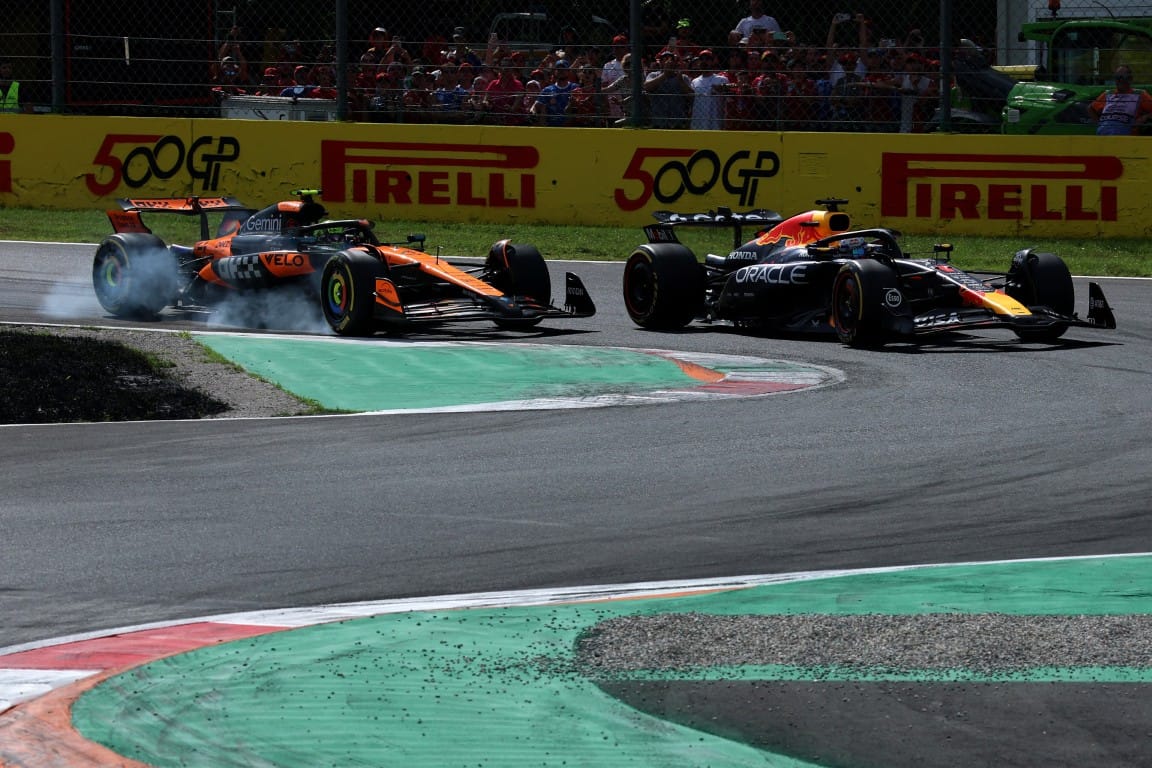
Stella said: “The way they won Monza was something more, from what was our assessment, than simply a car that adapts well at low drag.
“They were fast in the corners - medium-speed and low-speed corners - and fast in the straights.”
Red Bull team boss Laurent Mekies confirmed last weekend that there were aspects of improvements it had found with its new package in Italy that had carried over to Baku.
“I think we probably feel today that some of the good stuff we found in Monza we found here again - certainly in the slow-speed corners of Baku,” he said.
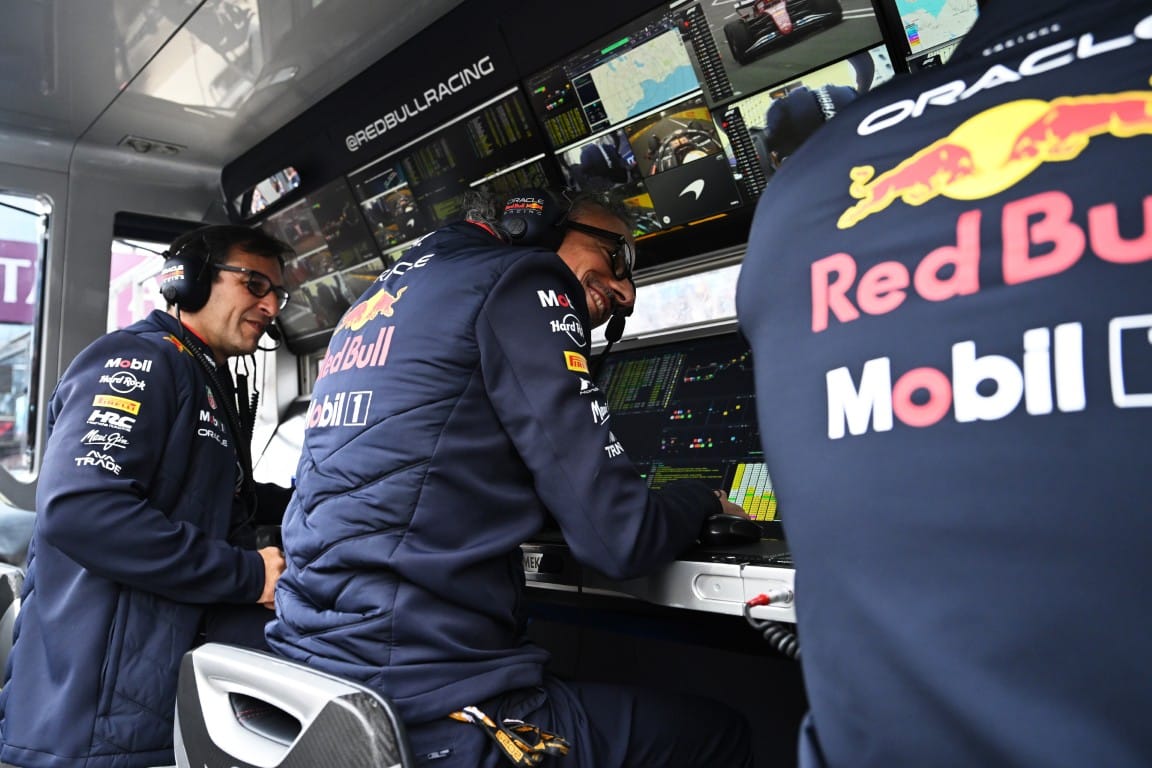
“It’s very low-downforce but slow-speed corners, and it worked very well for us. It is a different equation to Monza, so that’s good news.
“But the common point is the very low downforce. You go to Singapore, and you move your equations a bit. You keep the slow-speed corners, but you go to high downforce - where we have been struggling quite a lot, like Budapest and before Budapest.”
This is why the answers Red Bull will get from Singapore will be critical for judging if Verstappen can at all target the title.
Have historic weaknesses been addressed?
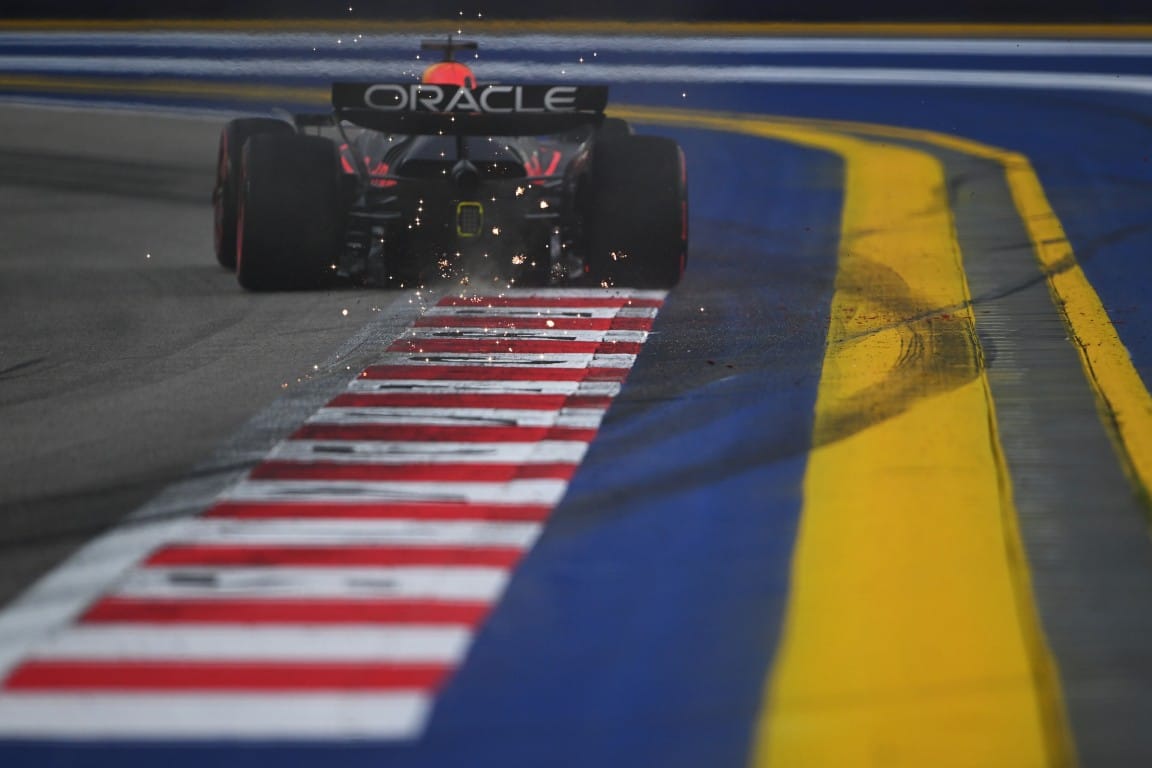
The challenge of Singapore is not just about the switch to a higher-downforce specification - because there are other aspects there that have hurt Red Bull in the past.
It is a bumpy track, and one where a quick laptime requires drivers to abuse the kerbs.
These are characteristics that have not been perfect for Red Bull in the past, even though it has made good gains in this area after being woeful in 2023.
But just being on par with the others will not be good enough for a team battling for the championship – it will have to be better than McLaren.
If some of these old traits come back to hurt it, then it will suggest that the inherent weaknesses of the RB21 that were exposed at some tracks this year have not been dialled out.
As Mekies said: “We take the challenge of Singapore, a track that’s been challenging for the team for many, many years. In the context of what we are trying to see, it’s very important to see what suddenly doesn’t work there anymore.”
Does McLaren’s main strength still hold up?
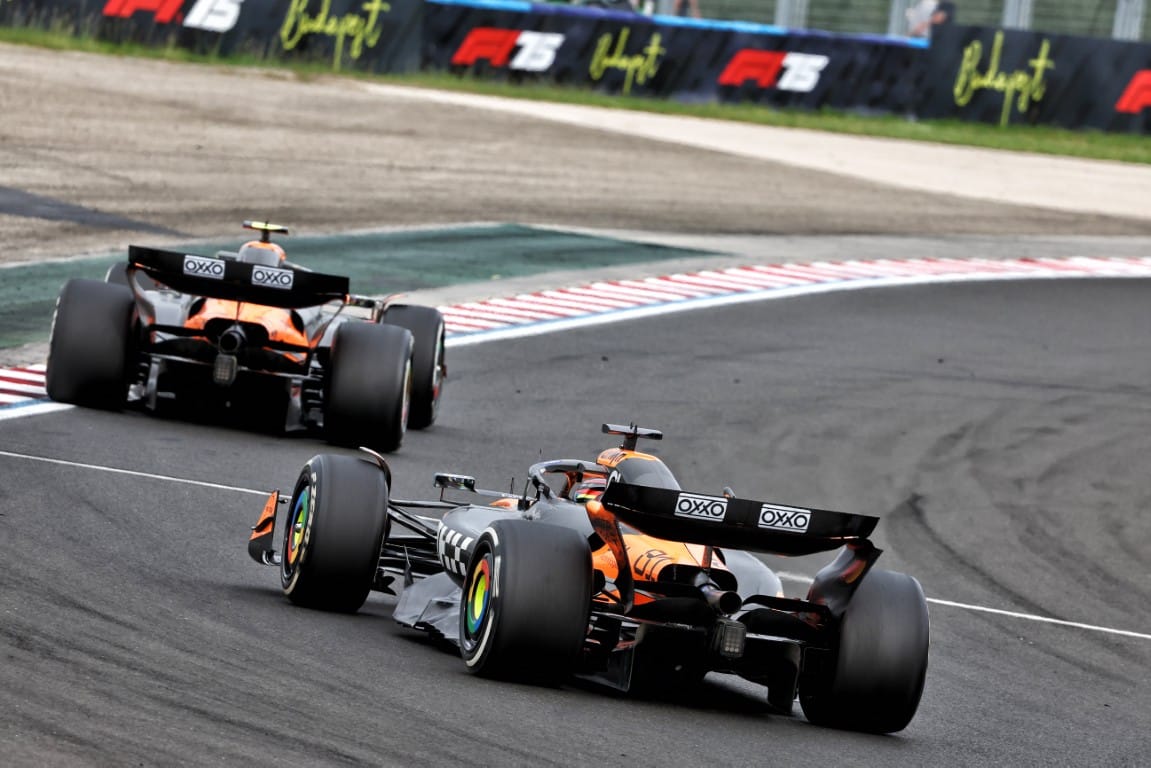
One other performance influence that will be a big factor in Singapore is temperatures – with it being a race where preventing tyres overheating is critical.
Beyond the downforce level impacts at Monza and Baku, another trait across both weekends were low temperatures – and tracks that delivered low tyre degradation.
These are characteristics that are known to shift the competitive order away from McLaren, which excels on hot race days where everyone struggles with thermal management of rubber.
Miami and the Hungaroring are the perfect examples of this. And let’s not forget that McLaren was so far ahead of its rivals in tyre management earlier this year that Red Bull thought it might be using water cooling tricks.
Ferrari team boss Fred Vasseur thinks temperature swings are now a critical factor in the shape of the fight at the front.
“Clearly today you have, I think, two groups,” he said. “McLaren and us, who are better when it's a bit hotter, and Mercedes and the Red Bull, a bit better when it's colder.”
A hot and humid Asian night race, where tyres are going to be punished a lot more, will show us whether the core advantage that McLaren enjoyed earlier in the year remains as potent as it once was.
“It will be hotter,” Mekies said. “And we know how sensitive not only us but the whole field is to that aspect. So we take it step by step.”
All these performance aspects explain why Mekies wants to wait for Singapore, both from the track characteristics and temperature perspective, before judging what shape his squad is in for the run-in.
One thing he points out is that the key progress that Red Bull has made is not just about the new floor that arrived at Monza.
It’s a host of improvements that it now needs answers from in Singapore to understand if it has made its cars quicker everywhere.
“We do not think in the team that there is any silver bullet with any single aspect,” he said. “We think there is a combination of a lot of small details that have extracted more performance out of the car.
“Of course part of that is the Monza floor, that is one of the changes that we have made. The extent of that competitiveness on different circuits - the honest answer is that we do not know. We are still hopeful. We will soon find out.”
All eyes on the Marina Bay circuit.


